.
27.05.2016
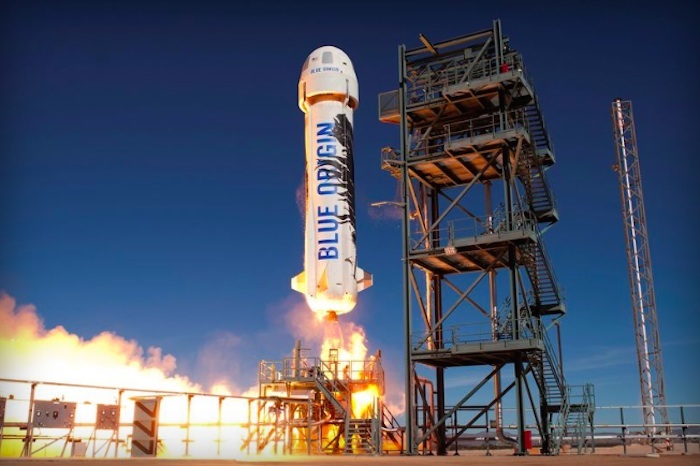
Blue Origin will intentionally crash its spaceship during the next test flight
The empty crew capsule will launch with faulty parachutes
Blue Origin is planning the next test flight of its reusable New Shepard rocket, but CEO Jeff Bezos just revealed a twist: the empty crew capsule, which sits on top of the rocket, will crash-land on purpose.
"On this upcoming mission we also plan to stress the crew capsule by landing with an intentionally failed parachute, demonstrating our ability to safely handle that failure scenario," Bezos writes in an email update that was sent out this afternoon. "It promises to be an exciting demonstration."
BLUE ORIGIN WANTS TO FIND OUT WHAT HAPPENS IF THE PARACHUTES FAIL
New Shepard is the company's flagship rocket, one that it hopes to use to send tourists to space starting in 2018. Those trips, if and when they happen, will be short — Blue Origin plans to offer just four minutes of weightlessness before the capsules return to Earth. Passengers will be passing what's known as the Karman line — an imaginary boundary 62 miles above the Earth that signals the beginning of what the industry officially refers to as "space" — but they won't be going into orbit.
The rocket that Bezos is talking about is the same reusable New Shepard rocket that Blue Origin has flown — and landed — three separate times. (While there are many differences between what SpaceX and Blue Origin are doing, Bezos is trying to accomplish a similar goal of lowering the price tag of getting to space by making its rockets reusable.) The crew capsule separated and returned safely to Earth using parachutes during each of those previous missions.
Crashing the crew capsule won't be the only difference during this test flight. Bezos writes that the company will "execute additional maneuvers on both the crew capsule and the booster" in order to learn more about how they behave under different conditions. "One of the fundamental tenets of Blue Origin is that the safest vehicle is one that is robust and well understood," he writes. "Each successive mission affords us the opportunity to learn and improve our vehicles and their modeling."
New Shepard has flown and landed three times since November of 2015. News of the first landing wasn't shared until a day after the company had completed the mission, but the private spaceflight company has become less secretive with each flight. That said, the company has not yet revealed a date for the upcoming flight.
Quelle: THE VERGE
-
Update: 5.06.2016
.
Jeff Bezos: Blue Origin Will Drop Crew Capsule Without a Parachute in a Few Weeks
"A parachute failure is a credible scenario," Bezos wrote today.
Now both Blue Origin and SpaceX have launched rockets and returned them to Earth for reuse. Blue Origin has even relaunched the same rocket (three times), a feat SpaceX has yet to achieve. But simply landing a rocket is only half the battle. Blue Origin, started by Amazon founder Jeff Bezos, hopes to one day to be able to offer passenger flights, which would require landings that don’t crush the skulls of the people on board.
“A parachute failure is a credible scenario in even the most carefully designed recovery system, so a robust vehicle needs to accommodate that possibility,” Bezos wrote in the Blue Origin email newsletter sent out today. “We’re about to do that test.”
He adds: “We’ll provide a heads up when we know the flight date, but it will likely be before the end of the month.”
After a joyride to suborbital space — and perhaps further once Blue Origin fully develops its BE-4 rocket booster — landings for space tourists and explorers should be safe even if the parachute doesn’t open.
.
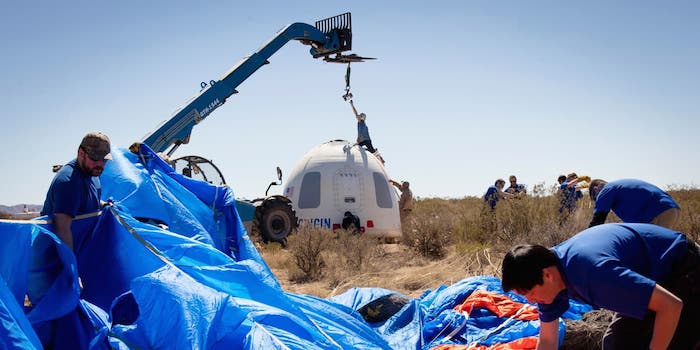
Blue Origin workers gather up a parachute after a recent test landing. The next test landing won't offer any parachutes.
-
Bezos is confident that the six-passenger crew capsule is ready for the same kind of trouble that once struck Apollo 15 when it experienced the trauma of landing in the ocean after one of its three parachutes didn’t catch, prompting the controllers on a nearby U.S. warship to radio the returning astronauts, “You have a streamed chute. Stand by for a hard impact.”
.
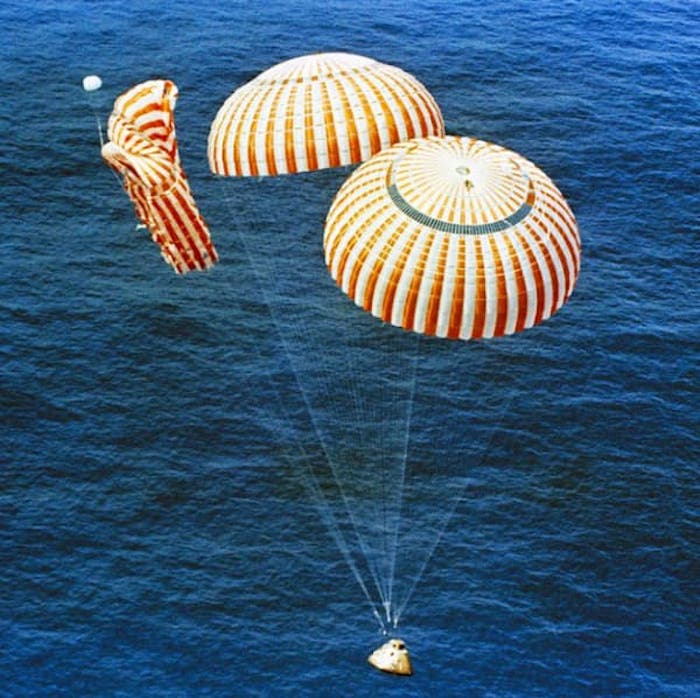
The Apollo 15 capsule that lost one of its parachutes on the descent inspired Bezos to perform a test of the New Shepard crew capsule.
Apparently, it’s all a part of his plan to ensure the New Shepard rocket is able to withstand just about anything.
-
In addition to redundant parachutes, the crew capsule is equipped with a two-stage crushable structure that absorbs landing loads, along with seats that use a passive energy-absorbing mechanism to reduce peak loads to the occupant. As an added measure of redundancy, the crew capsule is equipped with a “retro rocket” propulsive system that activates just a few feet above the ground to lower the velocity to approximately 3 ft/sec at touchdown. This final maneuver causes the dust cloud you can see when the crew capsule lands.
It is somewhat encouraging that the first Blue Origin rocket successfully touched down less than a year ago in November 2015, and SpaceX achieved the milestone the next month. Now, these same companies are actually making landings harder on themselves.
.
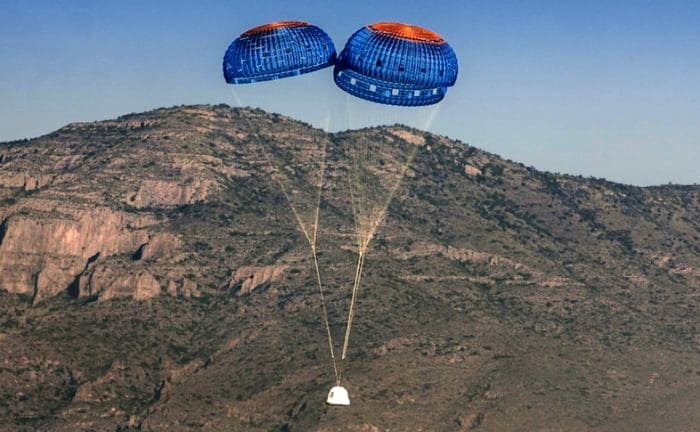
The crew capsule has successfully detached from the New Shepard rocket and landed without trouble.
Quelle: INVERSE
-
Update: 14.06.2016
.
WATCH BLUE ORIGIN'S ROCKET LAUNCH VIA LIVE WEBCAST FOR THE FIRST TIME
THE REUSABLE NEW SHEPARD BOOSTER TAKES OFF FOR THE FOURTH TIME ON FRIDAY
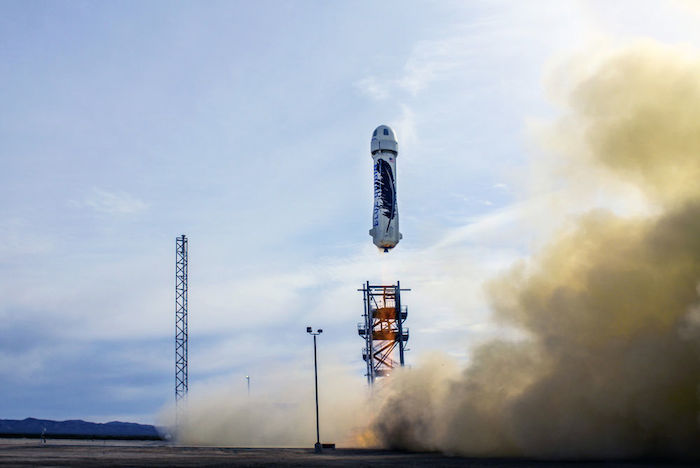
Blue Origin's New Shepard rocket
Blue Origin, the rocket company founded by Amazon founder and CEO Jeff Bezos, in November 2015 performed the first successful powered vertical takeoff and landing (VTOL) of a reusable rocket, the New Shepard. On Friday, that same booster will launch for the fourth time.
-
The rocket company founded by Amazon.com billionaire Jeff Bezos isn't exactly well known for its openness. Its launches from its West Texas facility are kept as secret as possible, and only a few reporters have ever entered the company's headquarters in Washington State.
On Friday, for the first time, you can watch a Blue Origin rocket launch live via webcast.
Blue Origin made history by becoming the first group to launch a rocket and then land it vertically on Earth in November 2015. Since then, the booster has flown two more times, and Friday's launch will be this booster's fourth launch into suborbital space.
Eventually, Blue Origin hopes to carry tourists 62 miles above the Earth using these (relatively) cheap, reusable rockets.
While the rocket booster should land vertically using its thrusters, a crew capsule will drift to the ground on three parachutes. Friday's flight will launch an uncrewed capsule to test what happens if only one of the chutes deploys properly.
In case of emergency, the capsule is also equipped with retro boosters to help soften its landing.
Quelle: PS
---
Blue Origin will live stream its next rocket launch for the first time
The test flight will also include an intentional crash landing
Private spaceflight company Blue Origin will attempt to launch and land its New Shepard rocket for the fourth time this week — and this time, we’ll get to watch the test flight live. CEO Jeff Bezos tweeted out today that the company is aiming to launch on Friday and that a live webcast will show the event at BlueOrigin.com. An exact time for the flight has yet to be announced.
This is the first time that Blue Origin has provided a live stream of one of its launches, suggesting that the company is trying to be more transparent with its projects. That’s smart, since Blue Origin has been criticized for its super secret reputation in the past. Up until recently, the company rarely gave interviews about its work, and the first few test flights of the New Shepard weren't publicized until after they had been completed. And even then, Blue Origin didn’t provide much information about the flights, apart from releasing highly stylized videos.
THE COMPANY IS TRYING TO BE MORE TRANSPARENT WITH ITS PROJECTS
But recent events suggest the company is transitioning to a more open mindset. In March, Bezos invited a small group of journalists to the company’s headquarters in Kent, Washington for the first time. And the CEO announced the most recent test flight of the New Shepard in April, before it actually took place. He even live-tweeted the event, letting people know that the vehicle had launched and landed smoothly.
Transparency is going to be crucial for Blue Origin, since the company’s main goal revolves around sending tourists into space. That’s what these uncrewed test flights of the New Shepard are all about. The reusable vehicle is designed to launch a crew capsule up to 62 miles above the Earth’s surface, where six passengers will experience about four minutes of weightlessness. In the test flights, the crew capsule detaches from the rest of the New Shepard vehicle in space, and both fall back to Earth. The main rocket body is supposed to reignite its engines and land upright on solid ground, while the crew capsule deploys parachutes to lower itself down gently.
Blue Origin has successfully demonstrated this launch and landing technique with the same uncrewed New Shepard vehicle three times before. But for this next test, Blue Origin wants to know what happens when that landing sequence doesn’t go according to plan. On Friday, two of the crew capsule’s parachutes will intentionally fail to deploy during the spacecraft’s descent. Bezos claims that the vehicle can handle the scenario just fine, and theoretically, any people on board would be safe. But for added protection, the crew capsule has some backup systems — such as retro-rockets and a "crushable structure" — to help keep passengers alive if an abnormal landing should occur.
Blue Origin plans to continue uncrewed test flights of New Shepard throughout the rest of the year. Bezos said that the vehicle will start carrying test pilots into space sometime in 2017, and paying customers could start riding as early as 2018.
Quelle: THE VERGE
-
Update: 16.06.2016
-
Jeff Bezos:
Replacing leaking O-ring in capsule’s nitrogen gas pressurization system. Rescheduling flight to Sunday.
Quelle: Jeff Bezos
-
Update: 18.06.2016
.
Blue Origin to Test Rocket Parachute Failure Sunday Morning
On Sunday, June 19, 2016 at approximately 14:15 UTC (10:15 a.m. Eastern time), the private rocket company Blue Origin plans to launch their New Shepard rocket for the fourth time. As with the three previous tests, it’ll launch straight up, deploy the crew capsule, and then come back down vertically. The crew capsule will come back much more slowly, using parachutes to descend gently (and a retrothrust system to make sure the landing isn’t too rough).
Except this time, the company has rigged it so that only two of the three parachutes will open.
This test is being done on purpose to make sure they can still safely land in the event of single parachute failure. As Blue Origin CEO Jeff Bezos said, “Works on paper, and this test is designed to validate that.”
This should be an exciting test. In a very different move for the company, they have announced they’ll be streaming the event live on their website (it starts at 13:45 UTC, a half hour before the launch). I find that very interesting; in general the company has not done that; they release video after the flights, and rarely even announce when the launch tests will be. I wouldn’t say they’re secretive, but they tend not to actively seek publicity.
I have to wonder if the live coverage of SpaceX launches is behind this decision. Obviously, SpaceX has captured the lion’s share of the public’s attention when it comes to rocket launches. SpaceX has carefully cultivated an excellent public outreach effort, and the result is that their launches are watched live by a lot of folks. I imagine Blue Origin wants a piece of that.
They deserve it. New Shepard (named after astronaut Alan Shepard, the first American in space) has launched successfully three times, and each flight has tested different aspects of the process, including a quick restart of the engine only a kilometer above the ground before landing. It’s actually pretty amazing.
What SpaceX is doing and what Blue Origin is doing are, at the moment, very different. SpaceX is launching a very large rocket into orbit, meaning it has to go sideways (usually to the east) very rapidly to go around the Earth. Blue Origin’s flights are suborbital; the rocket goes essentially straight up, past the arbitrary but generally agreed-upon 100-km altitude marking the beginning of space (at that height, there’s almost no air and no drag on the rocket). That’s far easier than going into orbit.
But not easy. Going up that high, releasing a capsule, having that land safely, and landing the rocket itself back down vertically on its tail is incredibly hard. Blue Origin has shown they’re getting the hang of it, though.
And while there’s a good market for suborbital flights (even a few minutes of free fall can be very useful scientifically), the plan is to use the knowledge gained to create a more powerful rocket capable of orbital flight. This is how SpaceX did it with the Falcon 1 rocket that led to the Falcon 9, and Blue Origin has similar ideas. Their BE-4 engine, currently being tested, should have enough oomph to do this. United Launch Alliance, which makes the Atlas and Delta rockets, has partnered with Blue Origin to develop this engine for use with their next generation Vulcan rocket. That’s being created as a competitor for SpaceX’s Falcon series, and I’ll be very interested indeed to see how this goes.
I’ll be getting up early Sunday morning to watch this fourth New Shepard test flight, and live tweeting it, too. Rocket launches are fun and exciting, and these tests are the first steps toward a bigger and better arena for commercial spaceflight. I have a lot of hope for this new chapter in space exploration. A lot, and I think it’s been earned.
There’s an (apocryphal) curse: “May you live in exciting times.” I don’t think it’s a curse. I think it’s the best time to be alive.
Quelle: BAD ASTRONOMY
-
Update: 19.06.2016
.
Blue Origin's first live rocket launch
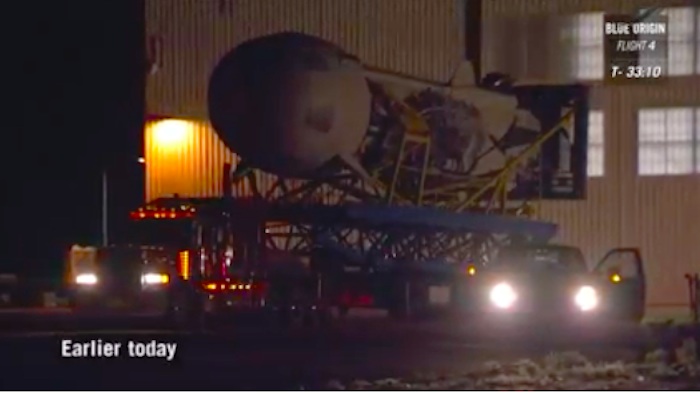
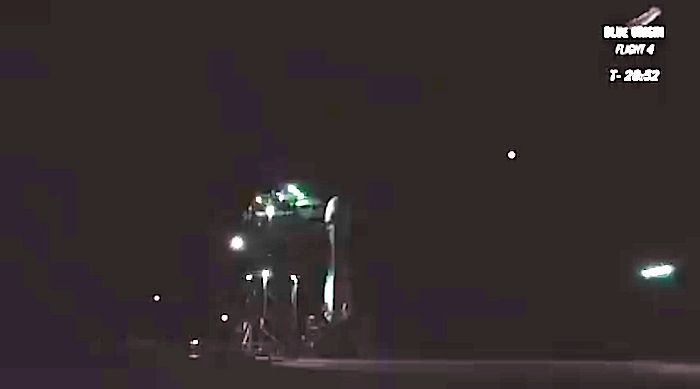
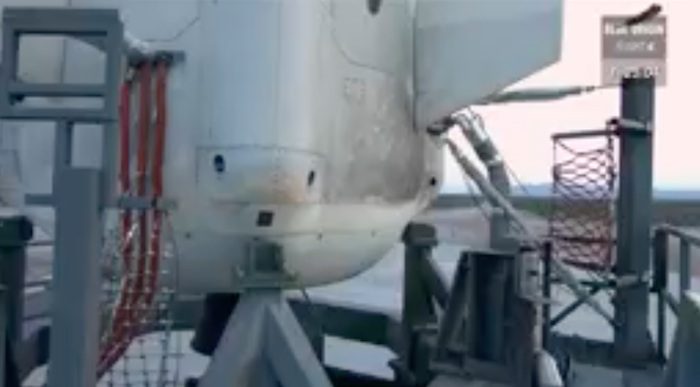
...
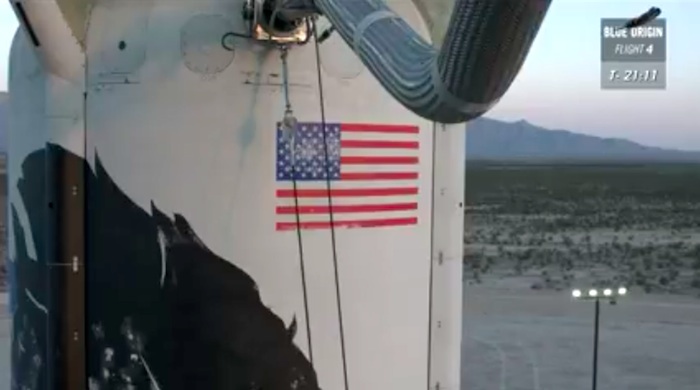
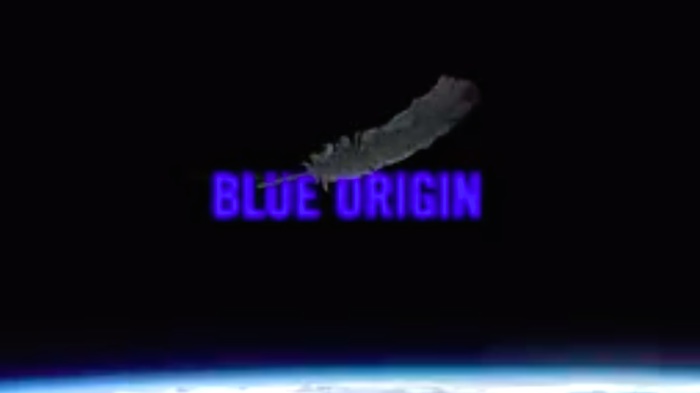
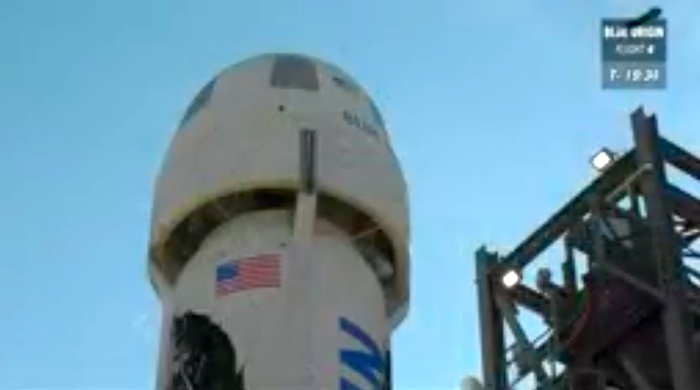
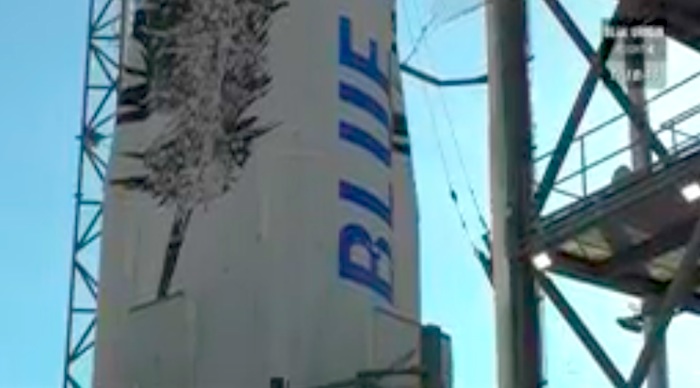
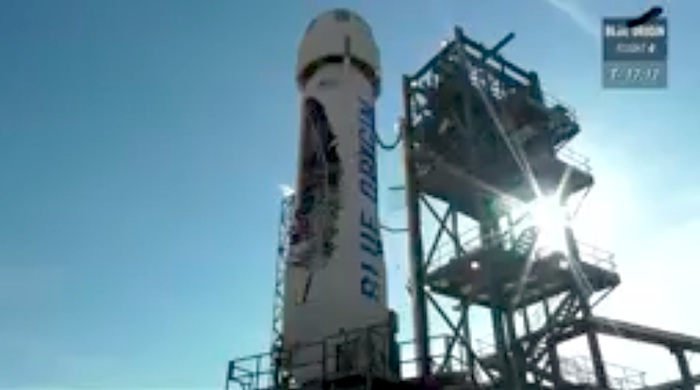
...
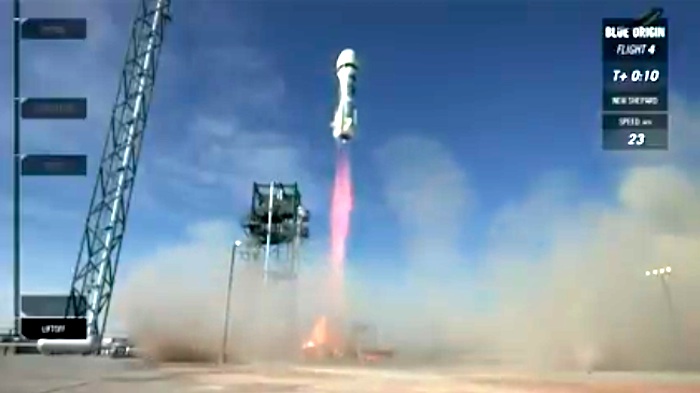
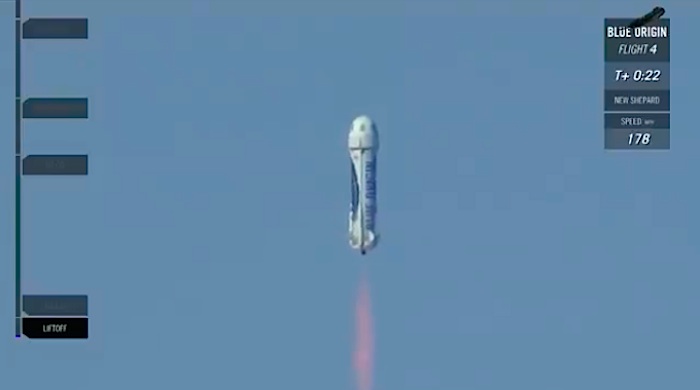
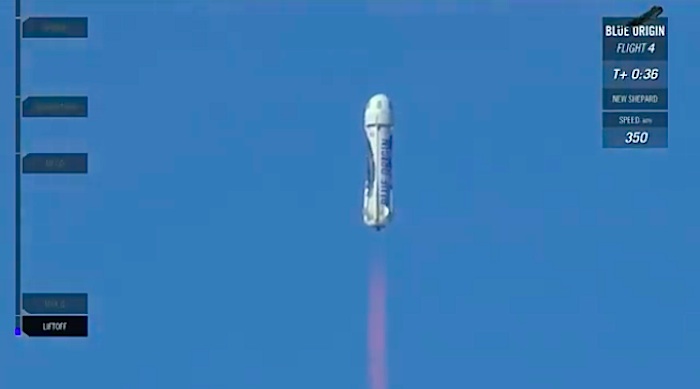
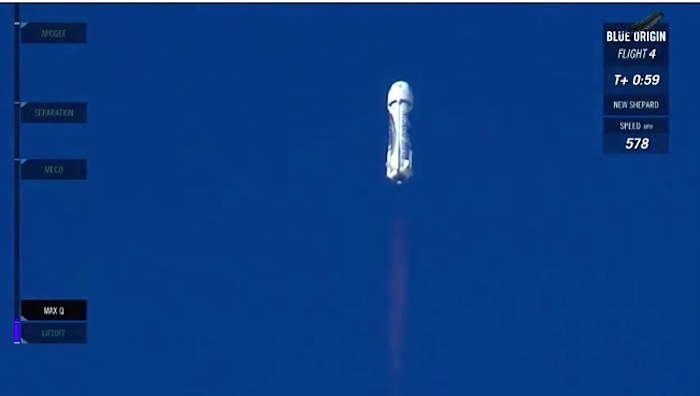
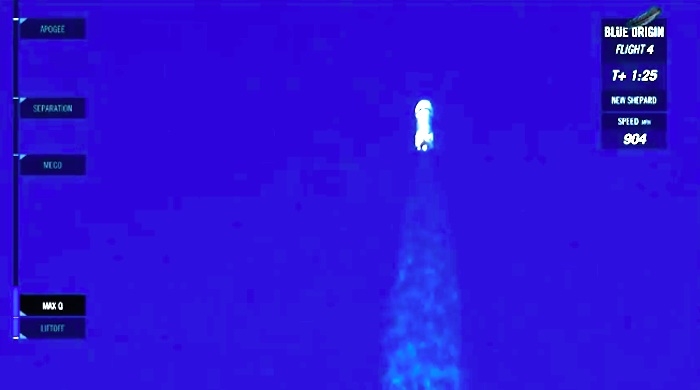
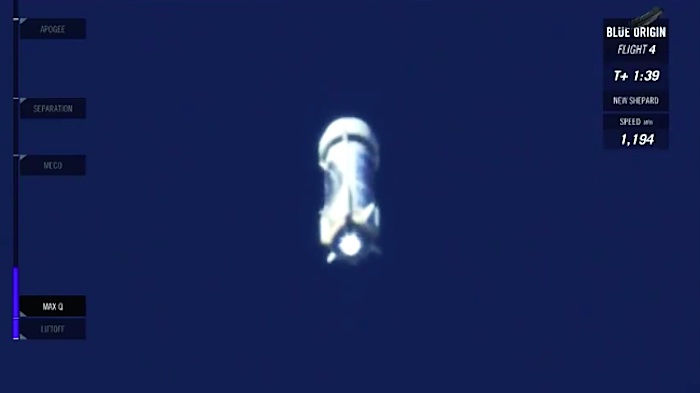
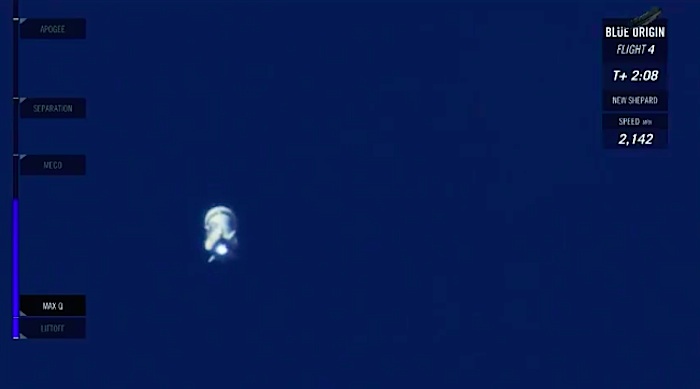
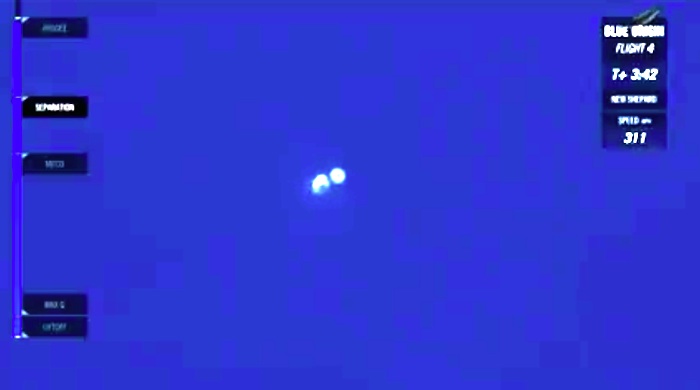
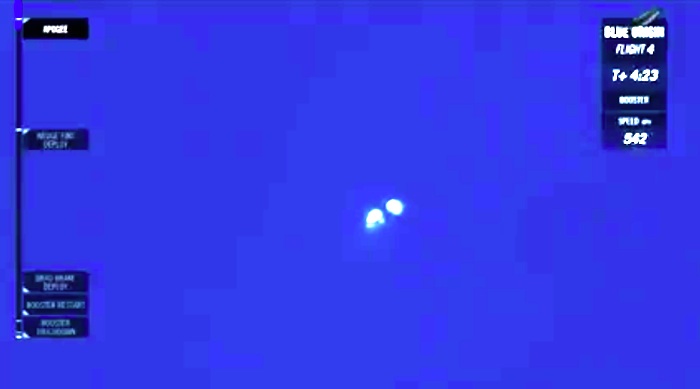
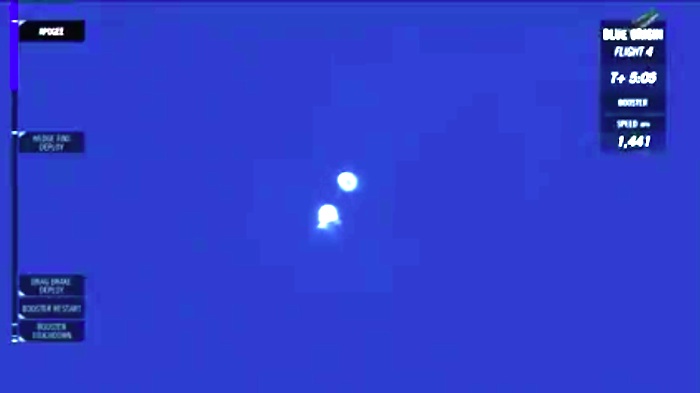
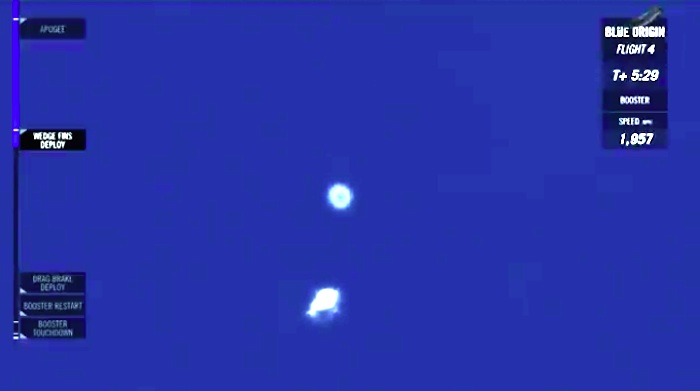
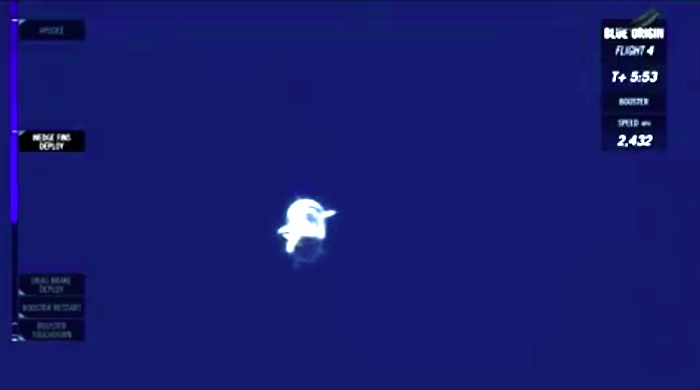
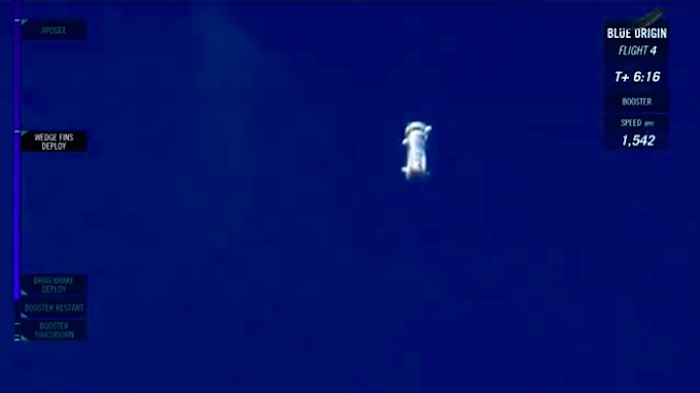
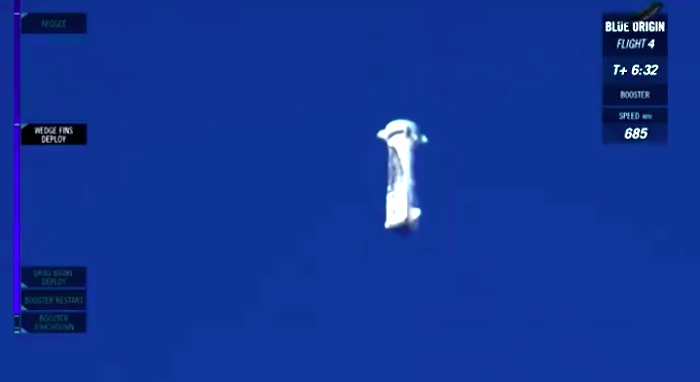
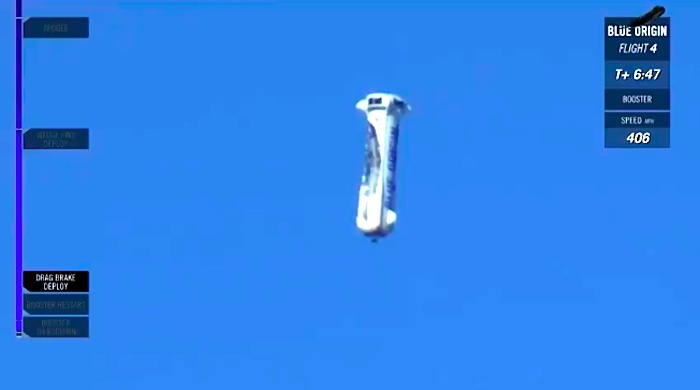
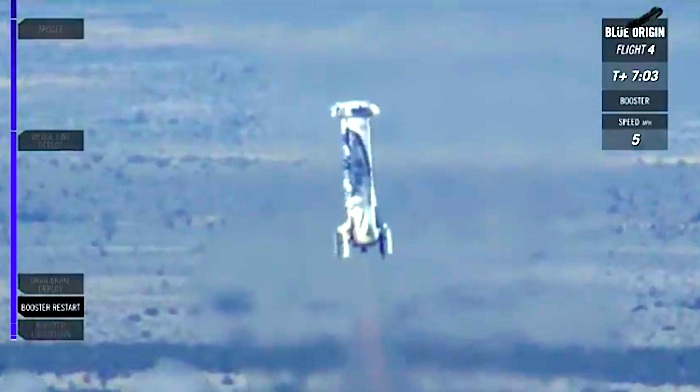
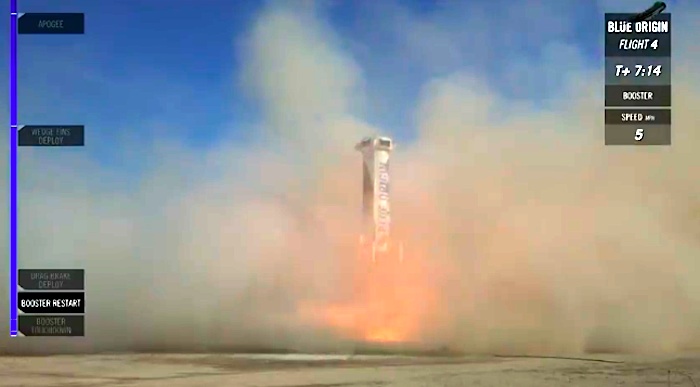
...
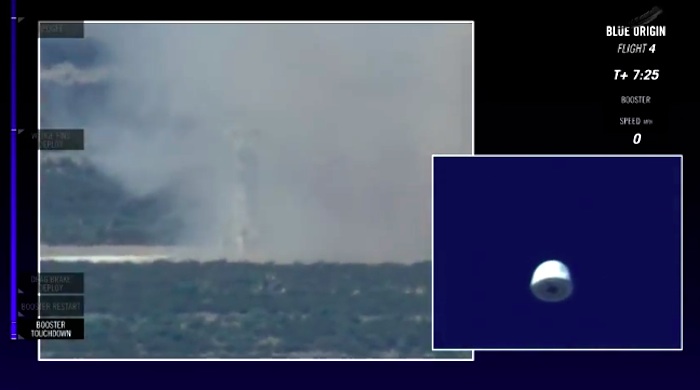
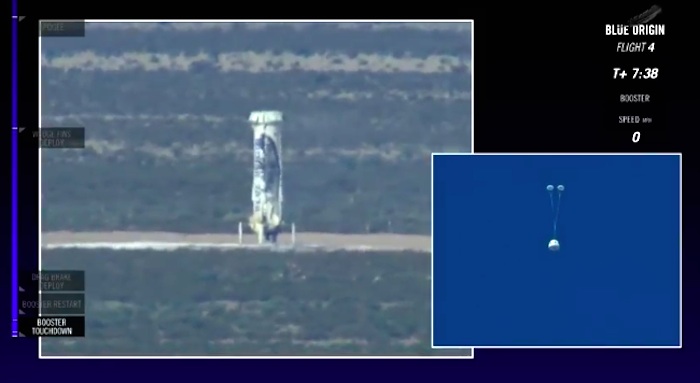
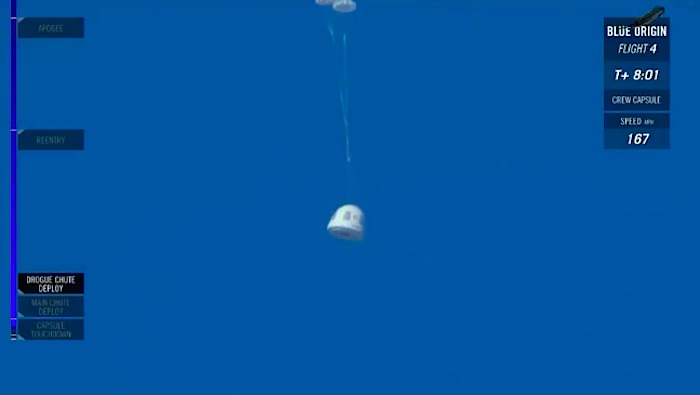
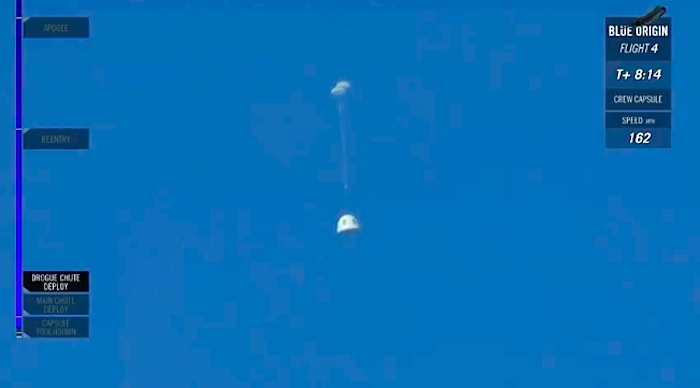
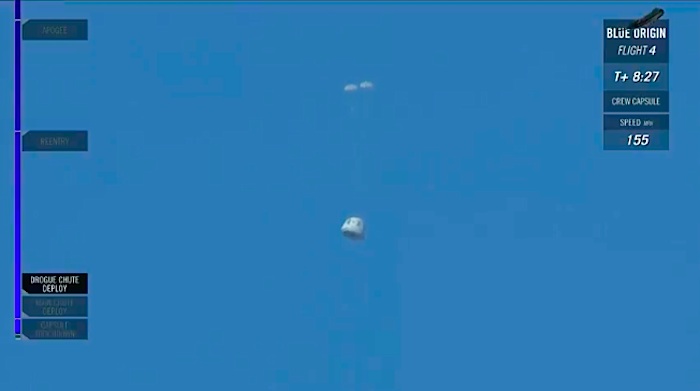
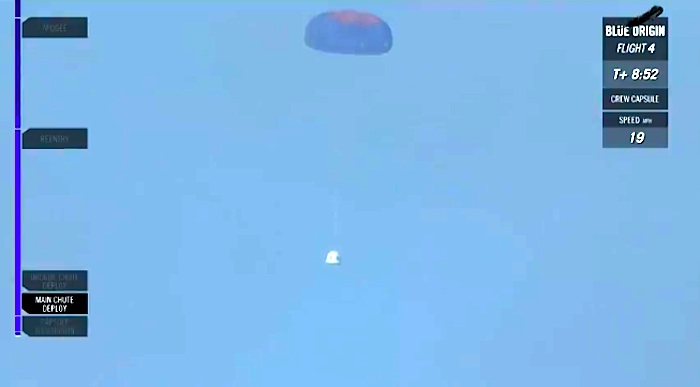
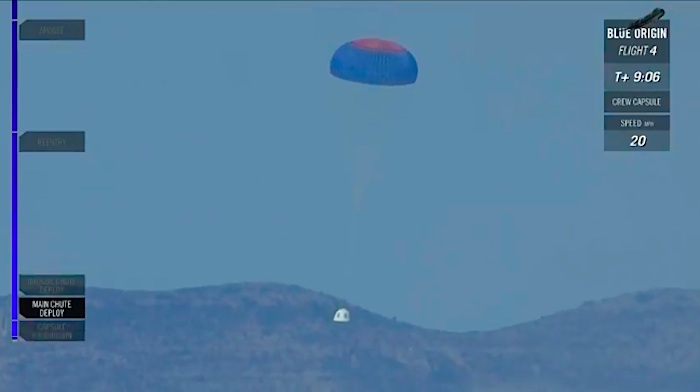
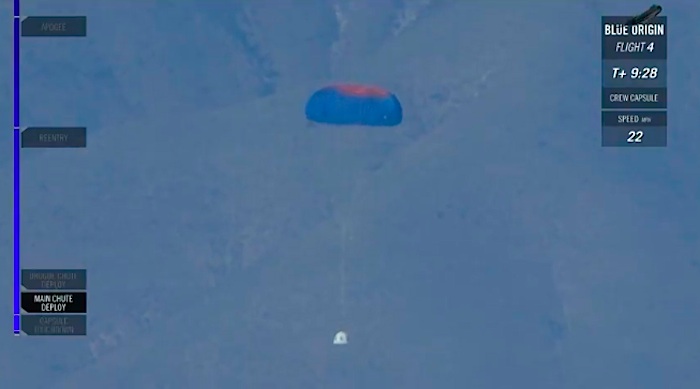
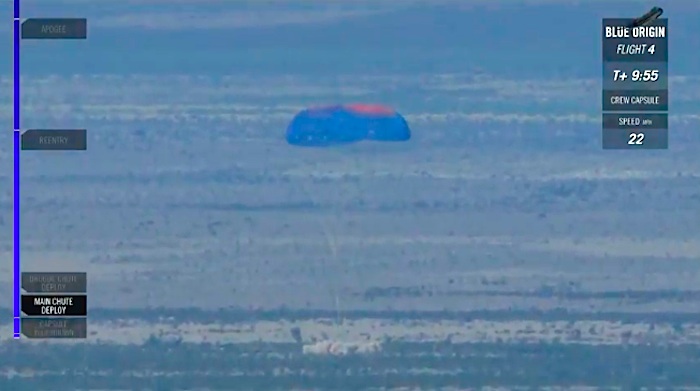
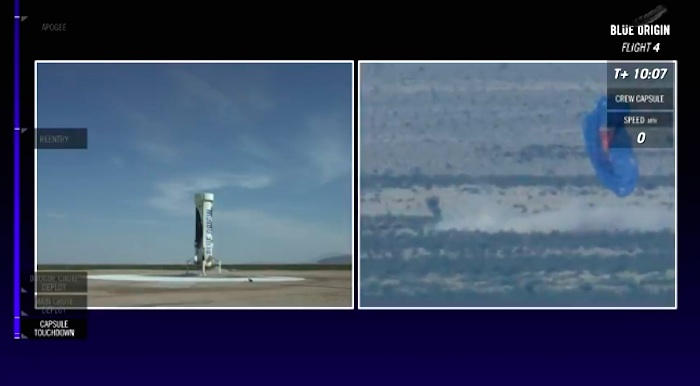
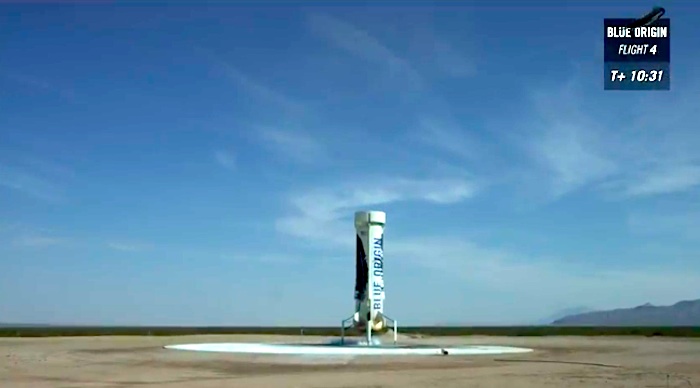
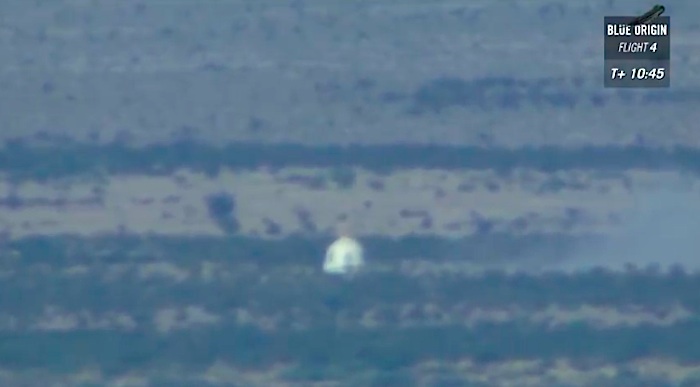
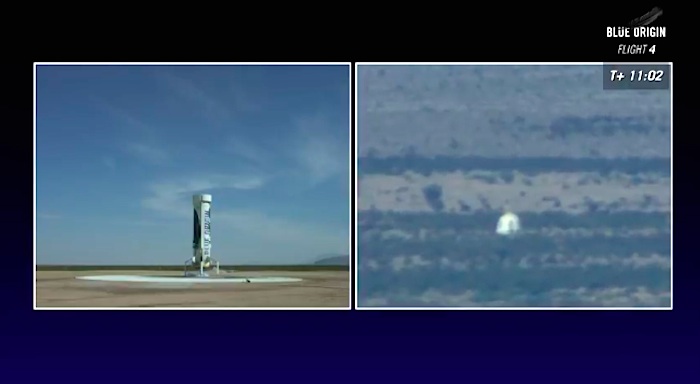
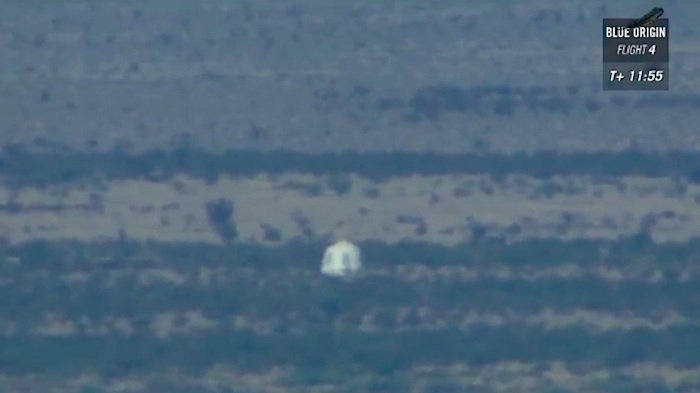
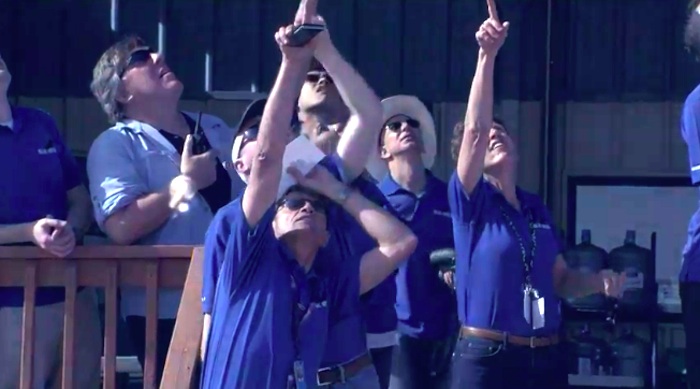
Quelle: BlueOrigin - LIVE
4700 Views
